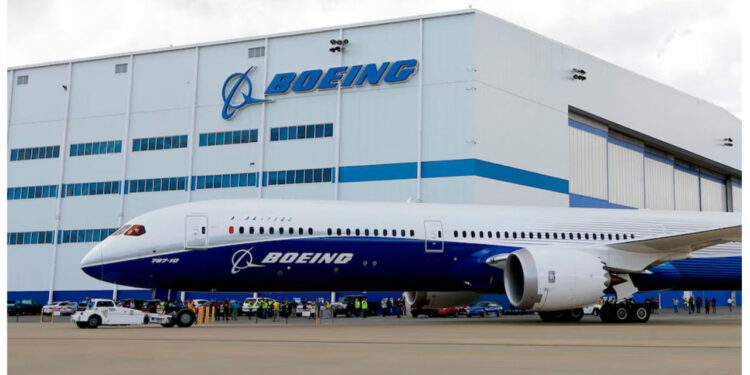Boeing has faced heavy criticism and intense scrutiny following an incident on Jan. 5, where a door plug was ejected from an Alaska Airlines flight. Investigators discovered that the plane, specifically a 737 Max, was lacking essential bolts during the installation of the door.
According to former employees, the company has been accused of neglecting to ensure the quality of its aircraft and other products. They claim that the company has been engaging in subpar work for an extended period of time.
Another whistleblower, Boeing engineer Sam Salehpour, came forward on Wednesday, revealing allegations against the company. Salehpour claimed that Boeing had taken shortcuts in the production of its 787 and 777 jets, which has resulted in the planes having significant structural flaws.
Salehpour expressed his astonishment at witnessing people physically jumping on airplane parts in order to align them. He described the unconventional method of aligning the pieces by deforming them through jumping, temporarily aligning the holes, and using a mallet to secure them in place. Salehpour emphasized that this approach is not the proper way to construct an airplane.
In a statement released on Wednesday, Boeing disputed Salehpour’s claims.
Gio Benitez from ABC News recently discussed the latest development with “Start Here”.
Gio: Who is this person?
Hey Brad! Meet Sam Salehpour, an engineer at Boeing. He’s raising concerns about the assembly line, specifically the improper fastening of the plane’s fuselage. According to Sam, this could potentially weaken the aircraft over a long period of time, we’re talking about decades here. He recently spoke about this issue at a press conference.
According to his lawyer, he had been bringing up these concerns with Boeing management for years, but they simply ignored him.
The FAA is currently investigating the claims made by a Boeing whistleblower, but Boeing has vehemently denied these allegations. In their response, they state that the claims regarding the structural integrity of the 787 are not accurate. They further assert that the concerns raised have undergone thorough engineering scrutiny under the supervision of the FAA.
After careful analysis, it has been confirmed that these concerns do not pose any safety risks. Moreover, the aircraft is expected to remain operational for many more decades.
Boeing vehemently disagrees with the claims made by the whistleblower, and they have provided us with an extensive and detailed statement in response. In fact, it is one of the longest statements we have ever received.
And to clarify, the issue at hand is distinct from the Max planes. The concern raised pertains to the Dreamliners rather than the 737 Max.
Benitez explains that the planes being discussed are the 787 Dreamliners, which are distinct from the Max 9 planes. The scrutiny faced by Boeing has been heightened due to incidents like the door plug flying off a plane in January, which was a significant safety concern. Additionally, the Max crashes in 2018 and 2019 also contributed to the increased scrutiny on Boeing.
The focus now shifts from the 737 Max planes to the 787 Dreamliners. Unlike the 737 Max, there have been no accidents involving the 787 Dreamliner. However, there is a concern surrounding this aircraft. It is important to note that these planes have been in operation for approximately 13 years. In 2021 and 2022, Boeing took action to address this specific concern in response to employee feedback. Production was slowed down, and the delivery of the 787 was temporarily halted. It is worth mentioning that the FAA approved Boeing’s approach to resolving this issue at the time.
It is crucial to mention that the whistleblower has not presented any documented evidence. Therefore, the responsibility lies with the FAA to clarify whether this is a new issue or if it is the same problem that Boeing has already addressed.
And is this even a problem? It’s intriguing how he poses this hypothetical situation. He acknowledges that there haven’t been any accidents so far, but raises the concern that they could potentially arise after several decades of flying. Considering it has only been 13 years, it’s difficult to envision how one would test or accurately predict what may occur in the distant future.
Boeing conducted numerous special stress tests on an older 787 aircraft, subjecting it to 165,000 simulated cycles of takeoffs, pressurization, depressurization, and landings. Surprisingly, no signs of fatigue were discovered during these tests. It’s worth noting that the aircraft is designed to withstand a lifespan of 44,000 cycles, meaning these stress tests pushed it beyond its expected limits by almost four times.
According to Boeing, although the simulation may differ from real-life circumstances, they assert its accuracy.
The whistleblower has announced their intention to testify on Capitol Hill next week, where they plan to present the evidence.

